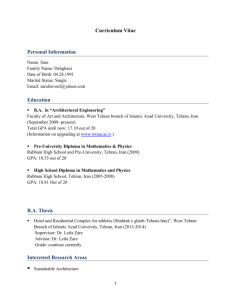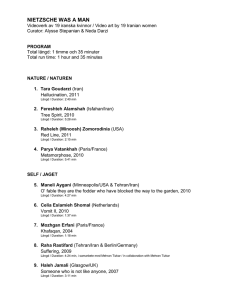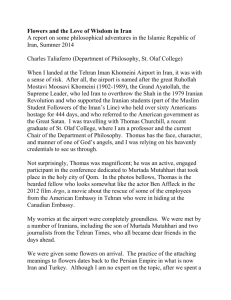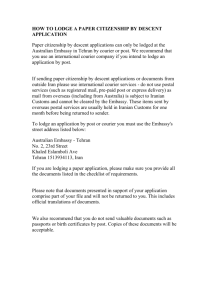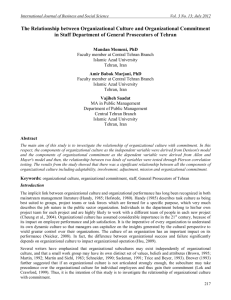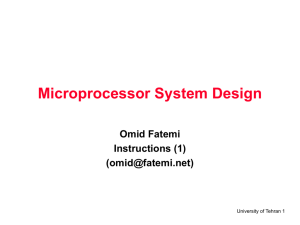The thesis presents new data from the Eocene Chapedony
advertisement
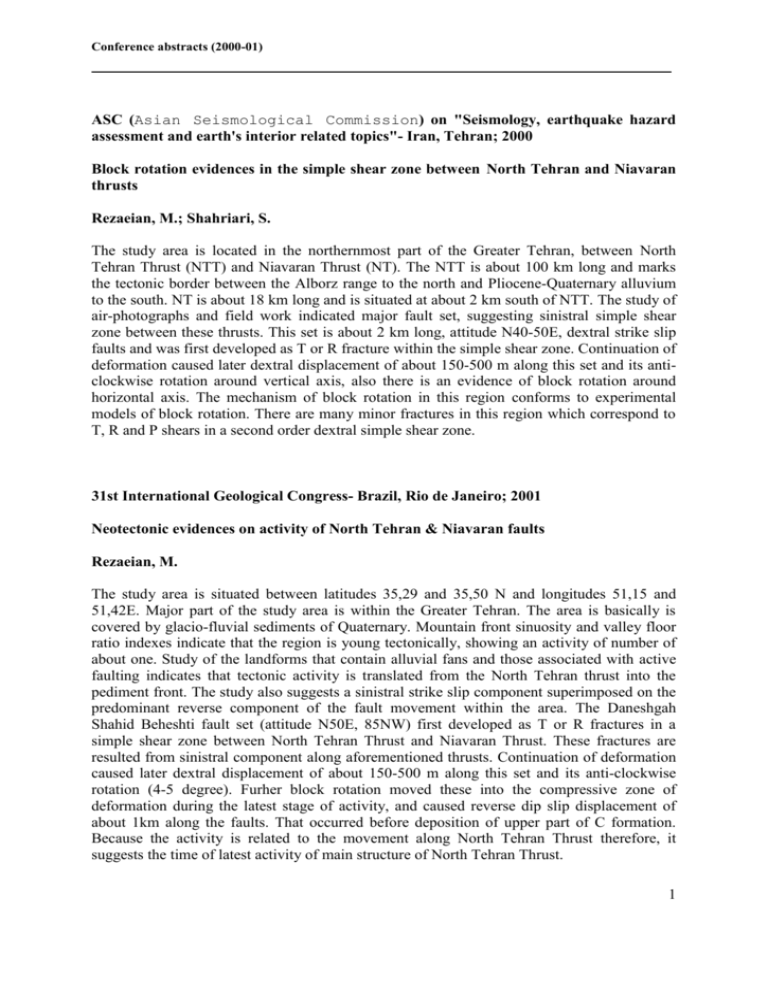
Conference abstracts (2000-01) ASC (Asian Seismological Commission) on "Seismology, earthquake hazard assessment and earth's interior related topics"- Iran, Tehran; 2000 Block rotation evidences in the simple shear zone between North Tehran and Niavaran thrusts Rezaeian, M.; Shahriari, S. The study area is located in the northernmost part of the Greater Tehran, between North Tehran Thrust (NTT) and Niavaran Thrust (NT). The NTT is about 100 km long and marks the tectonic border between the Alborz range to the north and Pliocene-Quaternary alluvium to the south. NT is about 18 km long and is situated at about 2 km south of NTT. The study of air-photographs and field work indicated major fault set, suggesting sinistral simple shear zone between these thrusts. This set is about 2 km long, attitude N40-50E, dextral strike slip faults and was first developed as T or R fracture within the simple shear zone. Continuation of deformation caused later dextral displacement of about 150-500 m along this set and its anticlockwise rotation around vertical axis, also there is an evidence of block rotation around horizontal axis. The mechanism of block rotation in this region conforms to experimental models of block rotation. There are many minor fractures in this region which correspond to T, R and P shears in a second order dextral simple shear zone. 31st International Geological Congress- Brazil, Rio de Janeiro; 2001 Neotectonic evidences on activity of North Tehran & Niavaran faults Rezaeian, M. The study area is situated between latitudes 35,29 and 35,50 N and longitudes 51,15 and 51,42E. Major part of the study area is within the Greater Tehran. The area is basically is covered by glacio-fluvial sediments of Quaternary. Mountain front sinuosity and valley floor ratio indexes indicate that the region is young tectonically, showing an activity of number of about one. Study of the landforms that contain alluvial fans and those associated with active faulting indicates that tectonic activity is translated from the North Tehran thrust into the pediment front. The study also suggests a sinistral strike slip component superimposed on the predominant reverse component of the fault movement within the area. The Daneshgah Shahid Beheshti fault set (attitude N50E, 85NW) first developed as T or R fractures in a simple shear zone between North Tehran Thrust and Niavaran Thrust. These fractures are resulted from sinistral component along aforementioned thrusts. Continuation of deformation caused later dextral displacement of about 150-500 m along this set and its anti-clockwise rotation (4-5 degree). Furher block rotation moved these into the compressive zone of deformation during the latest stage of activity, and caused reverse dip slip displacement of about 1km along the faults. That occurred before deposition of upper part of C formation. Because the activity is related to the movement along North Tehran Thrust therefore, it suggests the time of latest activity of main structure of North Tehran Thrust. 1
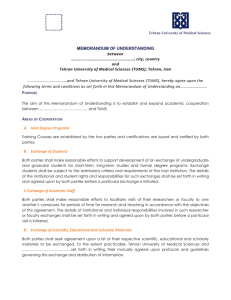
![Amir Shams [ card ] 02](http://s2.studylib.net/store/data/005340099_1-e713f7ae67edd60d4c53ae5bb9448166-300x300.png)


